Copyright enforcement mechanisms play a crucial role in safeguarding the rights of copyright owners. Various digital platforms, including YouTube, have implemented systems to address copyright infringement challenges. However, aiming to strike a balance between protecting content creators and respecting copyright holders is a tricky task. Many concerns have been raised time and again regarding the fairness and effectiveness of these systems, particularly surrounding the issue of unjustified takedowns and the potential for abuse of these systems.
We will be discussing the claims system of YouTube which seems to have flaws and laches allowing users to abuse the system. This can lead to take down of videos for unjust reasons such as competition, silencing criticism, or even silencing difference of political or social opinions.
How does YouTube’s Claims System work?
Content ID: Content ID is an automated mechanism employed by YouTube to compare uploaded videos with a repository of files provided by copyright owners. This mechanism is created to continuously scan videos or files that are uploaded on the website to identify any infringing matches. Upon discovering a match, the copyright owner gains the option to either monetize, block, or track the video. Although Content ID claims do not directly harm the channel, they can influence the video’s success by blocking or demonetizing them, even if it is for a short period.
Copyright Removal Request: A copyright removal request, is a legal measure employed by copyright owners to demand the removal of specific content from YouTube due to alleged copyright infringement, which is distinct from Content ID claims as the submission can be made manually by any user. Following the submission, YouTube reviews the request and if required, further details may be sought from the claimant, such as specific titles of copyrighted works or evidence of authorization. If the claim meets the criteria, the video is removed, and a copyright strike is issued to the creator’s channel. If a creator gets 3 copyright strikes, his account, along with any associated channels, is subject to termination; all the videos uploaded to such creators account are removed; and he can’t create new channels.
Flaws in the Claims System:
YouTube’s Content ID has its own flaws. According to a report quoted by the Verge, 2.2 million incorrect claims were overturned by YouTube. And these overturned claims were only those, where the creator had come forward and disputed such claims, and the case resolved in favour of the creator 60 percent of the times.[i] There must be more instances if no action was taken by the creator himself due to certain reason, an incorrect claim was passed by the Content ID and resulted in an unjust action.
There are also flaws in the procedure followed under copyright removal requests. A copyright removal request is supposed to be a “legal” request to remove the video, however, there is no legal evidence required to make these claims. It is easy to request removal of any video, by giving the following details: 1. Contact Information, 2. Description of Copyright Work, 3. Specific URL of the video in question, 4. Agreement to statements such as good faith (clickwrap statements); and, 5. Signature.[ii]
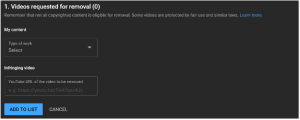
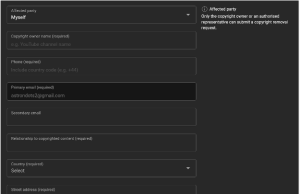

As is evident from the requirements and extracts given above, it is pretty easy to send a “legal” request, which results in people sending legal requests without giving any proof of infringement or ownership. There are no further requirements or evidence required and this is a major reason anyone can get away with sending claims without owning up to the final result.
Ideally, there should be mechanism where the complainant is requested to provide additional details such as actual proof of ownership, or specific timestamps where the video has infringed the Content, and other such details to try and reduce the number of false complaints being spammed into the system.
Even though warnings are given by YouTube that the accounts of those submitting false information will be terminated or suspended, it may not effectively curb the practice of false complaints, as the option of making a new account for asserting claims is easily available to any person. Therefore, it is important to ensure that prevention starts at the first instance of making the copyright claim request itself, so that creators do not face censorship or losses even for a temporary but significant period.
Considerations of Fair Use
In India the concept of fair use is recognized partly by “fair dealing”, which are non-infringing acts covered under Section 52 of the Copyright Act, 1957. Reproducing works for reporting current events, review, criticism, and teaching falls under fair dealing provisions. I believe that these types of videos arguably form a significant part of content on YouTube (such as news reporting, reviews, reactions, educational content, or criticism of songs or movies).
A relevant example is the ongoing case of Associated Broadcasting Company Limited v. Google LLC & Ors.,[iii] where the Delhi High Court has been approached by TV9, a news channel, seeking an injunction to prevent proceedings in the United States. TV9 contends that copyright strikes issued by a U.S.-based company were unjust, because the channel had used their videos under the fair use exception granted by copyright law for reporting on current affairs. Previously, several strikes against Indian news channels have been made by Viral DRM, a U.S.-based digital rights management firm, which submitted takedown notices under the Digital Millennium Copyright Act (DMCA) and also filed a lawsuit in a federal court in California for unauthorized use of their copyrighted content. The disputed videos included footage of natural disasters, such as hurricanes, owned by Viral DRM, that were used by the news channels for reporting purposes. Even though the merits and decision in this case may be different, it generally highlights how fair use considerations can often be overlooked by claimants.
The factors of consideration for “fair dealing” are laid down in Civic Chandran v. Ammini Amma, where to qualify as fair dealing, considerations like (1) the quantum and value of the matter taken in relation to the comments or criticism; (2) the purpose for which it is taken; and (3) the likelihood of competition between the two works, are to be considered.[iv]
In certain cases “de minimis” exception is also available upon the discretion of courts. In Saregama India Limited v. Viacom 18 Motion Pictures and Ors.[v] humming of 4-5 words from a song for 7 (seven) seconds was excused, because, inter alia, it was held that the use of four words was trifle and minimal.
YouTube may however not consider certain situations as fair use and/or fair dealing, because the view of foreign courts and foreign laws is different in various situations. For example, in a UK case of Produce Records Ltd vs BMG Entertainment Ltd,[vi] the usage of a 7.5-second sample of a track used in ‘Macarena’ was held to constitute as infringement.
While it is true that Courts are the appropriate body to look into these factors, YouTube should atleast require the claimant to agree to a statement that s/he has considered the fair use factors at the outset, which it does not require currently.

As visible above, the legal agreements taken from the claimant, does not involve any statement that confirms that claimant has considered fair use factors.
Even though a few directions are given to the claimant for considering fair use factors in its terms and on the claims page, these are likely to be missed. Additionally, YouTube can also decide, if it feels appropriate, after review of a complaint, to confirm from the claimant “whether copyright exceptions, such as fair use or fair dealing, have been considered.” However, this is not a guaranteed clarification, it is only an example for a question that YouTube may ask.
Therefore, in order to better inform the claimant about fair use factors, the “legal agreements” section could, in my opinion, have an additional agreement for fair use, to ensure that the claimant has considered if the use of his/her content falls under fair use/fair dealing to the best of his/her knowledge.
In automated systems such as Content ID systems, incorporating features to evaluate fair use factors such as the significance of the matching content, in relation to the creator’s video, and its intended purpose or theme (e.g., news reporting), including other factors, can be advantageous. This can be possible by leveraging the power of artificial intelligence technologies. If there is an automated assessment which indicates a potential fair use scenario, the copyright claim should not proceed automatically. Instead, copyright owners could be encouraged to submit a written complaint after considering fair use principles.
Resolving Disputes
Upon receiving a strike, creators are often left with limited recourse, regardless of the validity of the claim. There are three ways to resolve a copyright strike:
- Wait for it to expire: Copyright strikes expire after 90 days;
- Get a retraction: Creator can get in touch with the person who claimed the video and ask them to retract their claim of copyright infringement; or
- Submit a counter notification.[vii]

Even if the creator submits a counter-notification asserting their rights to use the video under fair use or other legal provisions, the video remains inaccessible for a mandatory period, which is the period given to the claimant to respond to a counter notification. This can result in significant disruptions to the creator, as he is left with no recourse other than to wait and lose the potential traffic he would have otherwise received on his video.
Takedown and Safe Harbor Principles
In the United States, platforms like YouTube are protected by the “Safe Harbor” provisions under the Digital Millennium Copyright Act (DMCA). 17 USC 512 (c) (3) explains the process for “DMCA Takedown” notices. This process requires online service providers (OSPs) and internet service providers (ISPs) to remove access to potentially infringing content when they receive a valid notice from a copyright owner. If they fail to comply, they risk losing their Safe Harbor protection, which shields them from liability for their users’ content.[viii]
In India, a similar Safe Harbor protection is provided to platforms like YouTube under Section 79 of the Information Technology Act, 2000. This section exempts intermediaries from liability for third-party content they host, as long as they meet certain conditions and comply with guidelines set by the Central Government. Specifically, Section 79(2) provides for certain compliances, including, to perform due diligence and observe guidelines provided by the Central Government i.e., listed in the Information Technology (Intermediary Guidelines and Digital Media Ethics Code) Rules, 2021 (“IT Rules, 2021”).
If YouTube fails to follow these compliances, and due diligence guidelines outlined in the IT Rules, 2021, it could lose its Safe Harbor protection and face significant liabilities due to the large amount of potentially infringing content uploaded by its users daily.
One of the due diligence requirement under the IT Rules is to take down content from the platform on obtaining “actual knowledge”.
Prior to the introduction of IT Rules, 2021, under Rule 3(4) of the IT (Intermediaries Guidelines) Rules, 2011, an intermediary had to upon obtaining knowledge by itself of “actual knowledge” by an affected person, act within thirty-six hours, and work with user or owner to disable information that was in contravention of Rule 3(2). However, it was not clarified as to what constituted “actual knowledge”, sufficient to initiate take-down or restrict access to such information.
After the introduction of the IT Rules, 2021, under Rule 3 (1) (d), the meaning of “actual knowledge” was clarified, where intermediaries upon receiving actual knowledge in the form of an order from a court or notification from an appropriate government authority that certain information hosted by it is prohibited information, must remove or disable access to such information within 36 hours of the receipt of such order or notification, unless required under Rule 3(2)(b) for sexual imagery where intermediary must take down such content within 24 hours on receipt of complaint from any person.
However, this is subject to the exercise of rights by any person conferred under the Copyright Act, 1957. In Myspace Vs. Super Cassettes Industries Ltd.,[ix] it was held that the provisions of the IT Act and the Copyright Act have to be read harmoniously in a complimentary manner to give effect to the intent of the legislature in relation to both the statutes.[x] Under Rule 75 of the Copyright Rules, 2013, upon receiving a written complaint alleging infringement, the responsible person must, within thirty-six hours, suspend access to the content for twenty-one days or until receiving a court order, whichever comes first.
Accordingly it can be interpreted that, YouTube has to disable content that infringes copyright within 36 hours upon receipt of a written notice from a copyright owner, but for non-copyright claims under the IT Act, YouTube only has to disable the content on obtaining “actual knowledge” which can be after receipt of a court order or notification by the Government.
Suggestions
Hence, it could be argued that the Content ID system can refrain from immediately blocking the matched video. YouTube can limit losses suffered by either party by keeping the monetization active until the dispute is resolved, after which the same can be disbursed to the appropriate party.
Additionally, for copyright removal requests, YouTube could incorporate a mechanism allowing both parties a chance to resolve the issue within a 36-hour window. This would enable a window for clarifications regarding fair use and resolution of disputes. Consequently, the copyright owner could retract the claim, enabling the video to remain on the platform. However, upon expiration of the window of 36 hours, if no resolution is reached, the video can be taken down, ensuring compliance with law.
This window can and should be longer, under applicable laws. The intent behind this window could be that an opportunity is given to the creator either to clarify his authority, intent, or settle the issue with the claimant, before the video is taken down. Otherwise, the creator will only see details of the copyright owner after the video is taken down, and while the issue can be settled later, it can result in significant losses.
A policy change can be considered by the Central Government for intermediaries, under Rule 75 of the Copyright Rules, 2013, where the term “written complaint” could be amended or interpreted to be on similar lines as that of “actual knowledge” under the IT Rules, 2021, where only on a receipt of a court order or notification from appropriate government, an intermediary is required to take down infringing content within 36 hours. This is because in the digital age, the copyright law should recognize challenges faced by intermediaries and creators in relation to multiple false claims, as was observed by the Court in Shreya Singhal v. Union of India, “… it would be very difficult for intermediaries like Google, Facebook etc. to act when millions of requests are made and the intermediary is then to judge as to which of such requests are legitimate and which are not.”. [xi]
On the other hand, Courts could develop a minimum standard requirement for constituting a “written complaint” under Rule 75, where appropriate documents or proofs establishing ownership have to be given (being the essence of copyright infringement actions). The Court could also consider mandating submission of detailed information identifying specific instances of infringement, to deter false copyright claims.
Conclusion
In my opinion, uploading a specific piece of video within a certain timeline matters the most to a creator. Such as instances where a video focuses on reporting news, social events, or other current events. Even when releasing a song, or releasing a film, the timeline of release matters a great deal to creators.
The mandatory period for takedown can cause creators significant losses, not just financially but also in terms of their reputation. This system can be exploited by individuals claiming copyright infringement to unjustly target competitors’ videos, suppress differing socio-political views, silence criticism against the government or powerful individuals, or even to blackmail creators by demanding payment in exchange for withdrawing their claims.[xii]
To ensure a more equitable copyright enforcement framework, platforms like YouTube can implement reforms to their Content ID system and copyright claims system, if not otherwise mandated by the law of applicable countries:
- Better Mechanism: As the automated Content ID system can wrongfully flag content that is original, or even where the creator has the right to use it, the Content ID system should be improved to avoid such wrongful claims. This may be possible by leveraging artificial intelligence technologies.
- Fair Use Recognition: The platforms should recognize fair use principles including other legal exceptions to the copyright law, and endeavour to ensure the claimant considers such factors, to prevent unjust claims. As for automated systems such as Content ID, a mechanism can be inserted to automatically consider instances where the matched videos lean more towards fair use, and automatic takedown in such cases should be stopped. This will encourage the claimant to file a written complaint after considering fair use factors.
- Alternative Claims System: Instead of immediately taking the video down on complaint through automated systems such as Content ID, platforms could explore removing such take down alternative altogether, and focus on reserving the monetized amount in a separate account until the dispute is resolved.
- Window of Resolution: For copyright removal requests, platforms could explore the option of allowing a time window permissible under law to get a response from the creator and encourage resolution of disputes, take down being only in case no resolution is reached within the legal timeframe.
- Transparency and Due Process: Implementing a more transparent and accessible appeals process is essential. While it is possible to dispute wrongful claims, the process is time-consuming and often skewed in favour of the claimant. This should be improved to create a fair and straightforward process of resolution.
- Policy change: In the digital age, copyright law must adapt to the challenges faced by creators and also intermediaries, who manage numerous content removal requests. Establishing minimum requirements for written complaints alleging copyright infringement, such as proper documentation which establishes ownership, can help balance the protection of copyright holders’ rights, freedom of speech of the creators, and practical realities that intermediaries face globally.
“Views expressed are personal opinions, not to be construed as legal or professional advice.”
End Notes:
[i] https://www.theverge.com/2021/12/6/22820318/youtube-copyright-claims-transparency-report.
[ii] https://support.google.com/youtube/answer/6005900.
[iii] Associated Broadcasting Company Limited v. Google LLC & Ors., CS(COMM) 9/2024 & I.A. 260/2024.
[iv] Civic Chandran v. Ammini Amma, 1996 PTC 670 (Ker HC) 675-677.
[v] Saregama India Limited v. Viacom 18 Motion Pictures and Ors., TA No. 29 of 2013 with T. No. 62 of 2013.
[vi] Produce Records Limited v. BMG Entertainment International UK and Ireland Limited (1999).
[vii] https://support.google.com/youtube/answer/2814000?sjid=13175349322080009102-AP#resolve.
[viii] https://www.dmca.com/FAQ/What-is-a-DMCA-Takedown?ref=sol_yt
[ix] Myspace Vs. Super Cassettes Industries Ltd., FAO(OS) 540/2011, C.M. APPL.20174/2011, 13919 & 17996/2015.
[x] Ibid, Para 57.
[xi] Shreya Singhal v. Union of India, (2015) 5 SCC 1.
[xii] https://www.reddit.com/r/youtube/comments/ala3t6/youtubes_flawed_copyright_system_is_letting/.
Image generated on Dall-e.





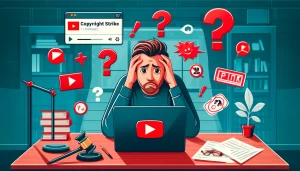
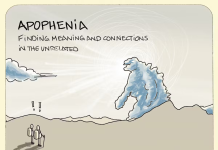
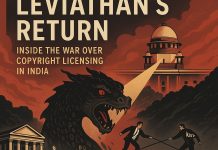
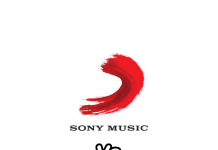










[…] example, join discussions on reforming automated systems like Content ID, which often generate false positives, or propose enhancements to the counter-notification process […]
[…] copyrighted material for purposes like criticism, commentary, or education. Platforms must consider fair use before removing flagged content, especially in ambiguous […]